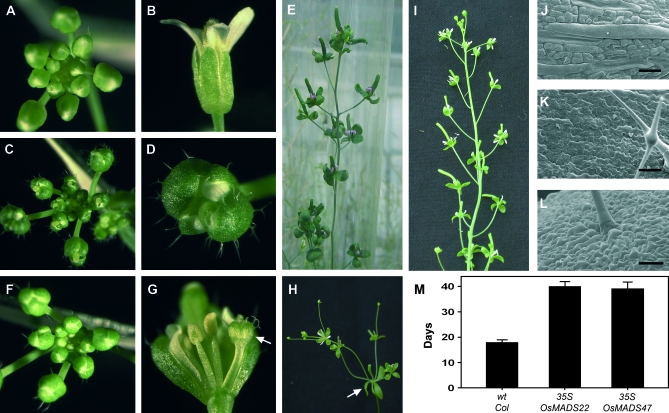Fig. 5.
Morphological analysis of OsMADS22 and OsMADS47 expressing plants. (A, B) Wild-type Columbia inflorescence and flower at anthesis. (C, F) 35S::OsMADS22 (C) and 35S::OsMADS47 (F) inflorescences. (D, G) Flowers of 35S::OsMADS22 (D) and 35S::OsMADS47 (G) at anthesis. Note the abundance of trichomes on sepals and the presence of an ectopic flower inside the 35S::OsMADS47 flower (indicated with an arrow). A sepal was removed in (G) to visualize the inner organs better. (H) A mature 35S::OsMADS47 flower producing extra flowers from the axil of leaf-like sepals. The primary flower is indicated by an arrow. Extra flowers are developing on long pedicels and secondary flowers reiterate the pattern shown by the primary one. (E, I) Mature inflorescences of 35S::OsMADS22 (E) and 35S::OsMADS47 (I), respectively. The sepals converted into leaves are retained on the flower after fertilization. (J–L) SEM analysis on the epidermis of a wild-type sepal (J), a wild-type cauline leaf (K) and a 35S::OsMADS22 sepal (L), respectively. The epidermis of 35S::OsMADS22 sepals resembles that of wild-type leaves (bars = 50 μm). (M) Graph showing the maturation of the siliques of 35S::OsMADS22 and 35S::OsMADS47 as determined by the number of days from anthesis to the beginning of senescence of the valves (mean ±standard deviation).

